Apple Watch Series 8 and Apple Watch Ultra Expand Health, Safety, and Connectivity Features
At its Far Out event, Apple introduced three new Apple Watch models, a modestly enhanced Apple Watch SE that holds down the low end of the line, a solidly upgraded Apple Watch Series 8, and the massively capable—and physically massive—Apple Watch Ultra. All are available to order now and will ship on 16 September 2022 (for the Apple Watch SE and Apple Watch Series 8) or 23 September 2022 (for the Apple Watch Ultra).
Apple Watch SE
In 2020, Apple introduced the first Apple Watch SE as a lower-cost Apple Watch model that relied primarily on the guts of the previous year’s Apple Watch Series 5. It wasn’t the cheapest model, but it was significantly more capable than the Apple Watch Series 3, whose price had fallen to $199. With watchOS 9 dropping support for the Series 3, Apple has removed it from the lineup and focused the low end on the second-generation Apple Watch SE.
Improvements from the first-generation Apple Watch SE are few but welcome. Most notably, although it retains the 40mm or 44mm case sizes, the screen is reportedly 30% larger than the previous generation. Apple also upgraded it from the S5 chip that powered the Series 5 to the S8 chip that’s in this year’s Series 8 and Apple Watch Ultra. The company claims performance improvements of 20% from that switch. It gains the enhanced motion sensors that enable the other two new models to detect car crashes—more on that shortly. Finally, Apple said that the back case now uses a nylon composite material instead of ceramic—the change probably helps Apple keep the cost of materials down.
Other compromises to keep the cost low remain the same. The Apple Watch SE still lacks the more-capable models’ Always-On display, blood oxygen sensor, ECG capability, and fast charging, and it continues to rely on Apple’s second-generation heart rate sensor rather than the current third-generation model. Nor does it gain the new temperature sensor and IP6X dust resistance.
Don’t take that as dismissive—the Apple Watch SE is an excellent deal and all that most people need. It costs $249 for a GPS-only model or $299 for the GPS+Cellular model. The case is aluminum, and you can choose from midnight, starlight, and silver colors.
Apple Watch Series 8
Where the second-generation Apple Watch SE is mostly a minor spec bump, the new Apple Watch Series 8 introduces a few legitimately exciting new features. Apple’s focus for its flagship Apple Watch model revolved around health, safety, and connectivity.
On the health side, the Series 8 introduces a new temperature sensor, which Apple leverages to enhance the Apple Watch’s Cycle Tracking capabilities. (There are actually two sensors, one on the back of the case and another under the screen, to help the Series 8 cancel out environmental temperature changes.) It tracks temperature changes during sleep, sampling every 5 seconds with a 0.1ºC sensitivity. For family planning purposes, the Cycle Tracking app analyzes this data to provide a retrospective estimate of when ovulation was likely, and it can also provide improved period predictions, along with notifications of possible cycle deviations.
Apropos of the US Supreme Court’s recent overturning of Roe v. Wade and subsequent concerns surrounding data privacy related to period-tracking apps, Apple emphasized its privacy protections for Cycle Tracking data, which is encrypted on your devices and synced with end-to-end encryption via iCloud, so not even Apple can access it.
While I applaud Apple for putting so much work and attention into improving Cycle Tracking with the temperature sensor data, I’m surprised the company isn’t also using that data for broader purposes. Perhaps other apps will fill this gap, but I’d like to see an app that could combine temperature and heart rate data to warn you that you might be falling ill—wouldn’t you like to know in advance if you had caught COVID-19? FDA approval is likely the stumbling block.
The big news on the safety front is that Apple has new and improved motion sensors that enable the Series 8—and the new Apple Watch SE and Apple Watch Ultra—to detect car crashes. The feature works only when you’re driving and triggers only in the time surrounding a crash, after which it asks you if you want it to activate Emergency SOS, just like the fall detection feature.
The sensors send a variety of data—deceleration, pressure, sound, etc.—to a machine-learning algorithm that Apple said had 1 million hours of training to detect crashes. Honestly, Apple made it sound very impressive, but it would seem that car crashes would be extreme enough to be easy to detect. And no, we’re not going to test this feature, though I’ll be curious how quickly we see false positives reported on the Internet.
The connectivity story is less compelling for most people, though jet-setters will appreciate it. With Apple Watch Series 8, you’ll be able to add your Apple Watch to an iPhone’s international roaming plan—likely for an additional fee—so your watch can maintain its cellular connectivity in other countries. Carriers will have to provide such plans, and I’m a bit dubious that it will be sufficiently easy and inexpensive to be worthwhile in most cases.
Apple also noted that a new Low Power Mode provides up to 36 hours of battery life on a full charge by disabling certain features. However, the company also said that Low Power Mode would be available on the Apple Watch Series 4 and later, meaning that it’s a watchOS 9 feature and not specific to the Series 8.
The Apple Watch Series 8 aluminum case comes in four colors—midnight, starlight, silver, and Product(RED)—and starts at $399 for GPS-only and $499 for GPS+Cellular. The more expensive stainless steel case comes in silver, gold, and graphite and starts at $699. There are a variety of new bands from Apple, Nike, and Hermés.
Apple Watch Ultra
The big news—in many ways—in the Apple Watch world is the company’s new Apple Watch Ultra. Moving on from the high-end fashion watch world, Apple has now set its sights on the high-end sports and adventure watch market with the Apple Watch Ultra.
Described as “a watch that pushes boundaries,” the Apple Watch Ultra is a completely redesigned Apple Watch with a 49mm titanium case and a flat sapphire front crystal embedded in the case to prevent side impacts from breaking the screen. It’s the largest Apple Watch display ever and the largest Apple Watch ever, so you’d better have a thick wrist or want to wear it over a wetsuit. It’s thick, at 14.4mm versus the 10.7mm of the Apple Watch Series 8 and Apple Watch SE. And it’s heavy, at 61.3 grams, more than twice the weight of a 40mm Apple Watch SE at 26.4 grams. (A stainless steel 45mm Series 8 is much closer at 51.5 grams.)
Featurewise, the Apple Watch Ultra is a superset of the Apple Watch Series 8, so it includes all the same sensors and base capabilities, and cellular connectivity is standard. But it goes much further. Most notably, the Apple Watch Ultra features a new orange Action button that apps can customize for their own purposes. Finally, an Apple Watch where you can start and stop a workout by pressing a button instead of trying to swipe on a screen with sweaty, trembling fingers! You’ll also be able to attach any shortcut you want to the Action button. The Digital Crown is larger, and the side button stands out from the case, both of which make the Apple Watch Ultra easier to control while wearing gloves, something that’s nearly impossible now.
The Apple Watch Ultra’s Action Button is powered by some awesome new App Intents APIs. You will be able to build your own apps to integrate with it, like a hockey app that uses the button to record goals! And for users, the button can kick off any Shortcut you want!
— Michael Gorbach (@mgorbach) September 7, 2022
Other new hardware capabilities include a brighter Always-On display that Apple says is readable even in direct sunlight and a precision dual-frequency (L1 plus L5) GPS that works better in certain conditions—steep gorges, urban canyons—that often stymie GPS signals. It features an 86-decibel siren that can be heard up to 600 feet (180 meters) away and includes dual speakers and a three-mic array with beamforming for better audio output and input, even in windy conditions. There’s also a depth gauge and water temperature sensor.
That’s right—with the Oceanic+ app coming in a few months, the Apple Watch Ultra can double as a dive computer, meeting the European EN13319 standard for diving accessories. It’s water-resistant to 100 meters, though Apple qualifies that with “swimproof and recreational dive to 40m.” If the desert or tundra is more your thing, it’s certified to be IP6X dust resistant and tested to the US military standard MIL-STD 810H for altitude, high and low temperature, temperature shock, immersion, freeze/thaw, and vibration.
Apple is targeting extreme athletes, adventurers, and wannabes everywhere with the Apple Watch Ultra. It has twice the battery life of an Apple Watch Series 8 with up to 36 hours in normal usage and up to 60 hours with an extended battery optimization mode that Apple is promising for the future. You can see exactly who Apple thinks will buy the Apple Watch Ultra by the names of its bands: Alpine (nylon with a hook clasp), Ocean (a stretch elastomer with extensions to fit over wetsuits), and Trail (a nylon sport loop with a tab for easier adjusting).
It also includes a new Wayfinder watch face that displays a compass and has a Night mode that switches to red on black for easier reading in the dark. A redesigned Compass app provides multiple views, a backtrack capability to retrace your steps, and waypoints for easier navigation.
Frankly, it’s an impressive product, and I’m looking forward to seeing what app developers do to take advantage of the Apple Watch Ultra’s new capabilities, particularly the Action button. Rumors suggested that Apple might price it as high as $999, so it was a welcome surprise when the company announced that it would be only $799. That’s more than Garmin’s running/triathlon Forerunner series but less than Garmin’s adventure watches, though they boast 16 to 28 days of battery life.
The main thing that will give many people pause, particularly those who are smaller, is the raw size of the Apple Watch Ultra. If you’ve worn a 40mm Apple Watch SE so far, jumping to a 49mm Apple Watch Ultra that could be half again as thick is going to look ungainly. And I say this as someone who used to wear a goofy Garmin Forerunner 305.
Regardless of whether it’s ideal for everyone, the Apple Watch Ultra is a welcome addition to the Apple Watch line, and I’m sure many people have already placed their orders.
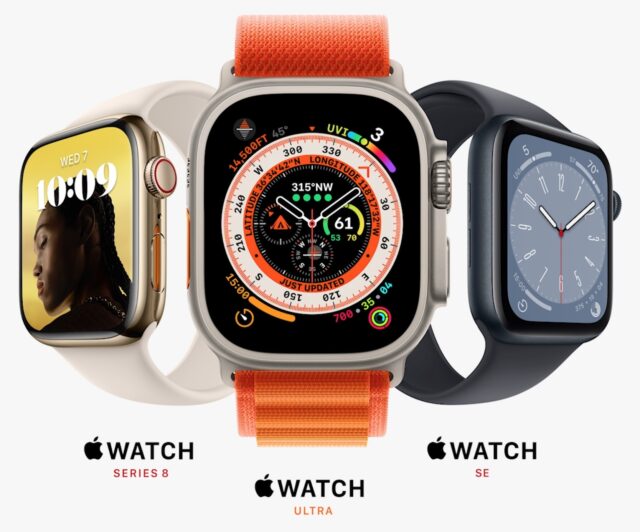
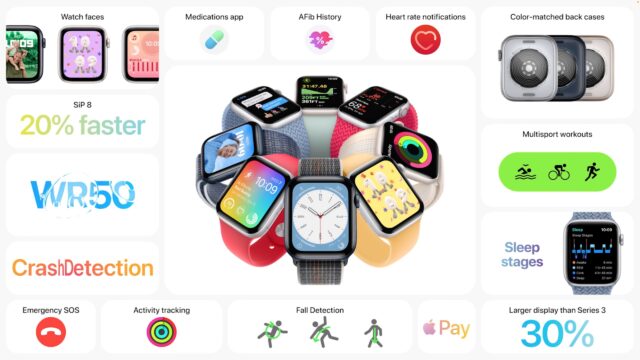
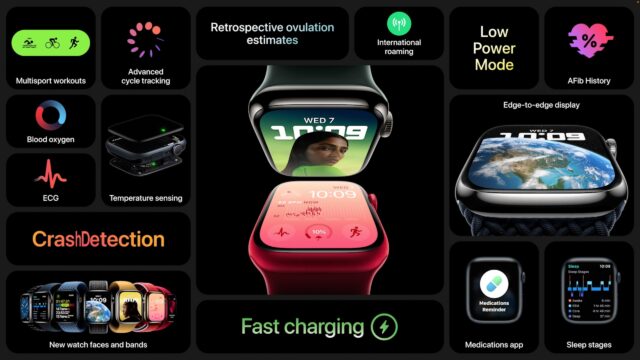

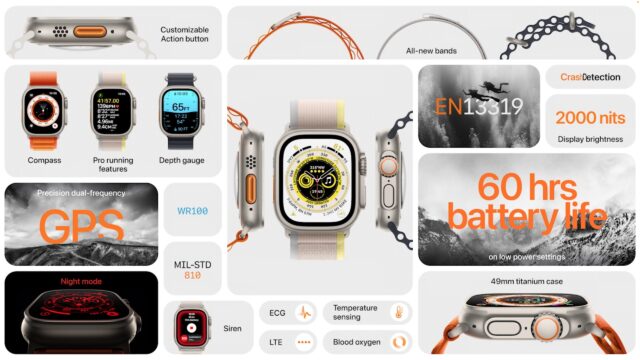
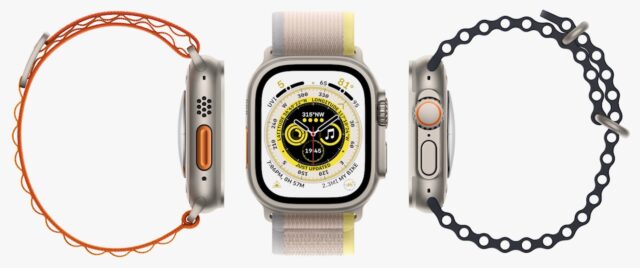
I have been an early adopter of every even-series Apple Watch. However, I don’t find the hardware improvements in the non-cellular version to be worth getting. Car crash detection is also a feature of the new iPhone series, and the only announced application for the temperature sensing app doesn’t apply to me. Everything else new will apparently be in software. So, this looks like a pass for me.
Despite all the hype, optical heart rate recording, whether by Apple, Polar, Garmin, or other is still inaccurate. Can an Apple watch be paired with a chest transmitter from Polar or other manufacturer using ANT+ and/or bluetooth?
Yes, BT rather than ANT I’m fairly sure, and it has been able to for years. For example, Scosche makes an arm strap heart rate transmitter that works with the AW. (Thats not how they market it BTW).
I’m planning to upgrade from my S5 this year. I don’t necessarily need the advanced features of the Ultra, but I like the bigger battery and the price isn’t that much higher than the S8 in stainless, which is what I’d get. Battery health on my S5 is 86%, so it can be a challenge most days to get through without at least topping up at some point. (IMO the Ultra is a little ugly, and I’m worried that it would be too big.)
I’m away from home and haven’t seen the presentation or videos but I’m home tomorrow so I’ll try to decide in a couple of days.
It will be interesting to see how the Ultra pans out as a dive computer. I didn’t see any mention of when the enabling app (Oceanic+) will be available or how much the subscription will cost.
Right now I’m using a very low end Suunto Zoop Novo, which does the job, but it would be nice to have something with a more dazzling display, a compass and integration with an iPhone app. (I currently use Subsurface, which also does the job.)
From Wired: “The Ultra is also designed to become a full-on wrist-worn dive computer. It meets recreational dive standards for waterproofing and has a new depth gauge. When it debuts this fall, the Oceanic+ app (designed in partnership with Huish Outdoors) will let divers see a decompression timetable, dive planning, a logbook, and other features serious divers need.”
I wear my Watch during the day and charge it at night, so sleep tracking is a no go (charging just takes too long to do it in the morning after getting up). Since you can pair several watches to your iPhone, I am wondering if you could use one Watch during nighttime for sleep tracking and another one during daytime for all the other stuff?
Anyone here with real world experience wearing 2 Watches and how that integrates within the Health app?
Yes! I did this with my old Series 2 overnight until the S2 stopped getting watchOS updates.
I’ve also done things like wear the S2 while I am doing dirty work (e.g., sanding and painting). The health app integrates the two sources perfectly. Sometimes it takes a little bit for the watch to sync data from the health app when you first switch (so, for example, it’ll be a few minutes before the activity app realizes all the activity you’ve done with the other watch.)
When I upgrade (I’m still not sure which of the models I’ll order) I will likely use my S5 as my sleep tracking watch.
Also, the S7 and S8 models do have fast charging. I can’t tell you from experience how fast they work, but I’ve just been traveling and charging my S5 when I wake. When I wake up the watch is typically at about 83% charge, and after 30 minutes it’s well past 90%, sometimes it’s fully charged. (I do charge the watch about an hour before I go to bed each night so it’s fully or nearly fully charged when I go to sleep,)
Had not had this idea…but if we trade up from our S5s we will likely do this as well now that I know about it.
Also, the watch app is very good about noticing that you have changed watches automatically. Also, you can have multiple watches set up to unlock a Mac.
Hmmm… I might have some bad news for my wife who has an eye on my S4 for her surfing and activity tracking.
I watched the announcement last night. I still can’t decide on the Ultra or the stainless S8. In addition to the large case size in height and width, the Ultra is quite thick compared with the S8. One thing I discovered about it is the fact that there is small titanium bezel to protect the crystal, plus screws holding the case closed. I hope that one day these two features make their way to the regular watch series. Screws rather than glue holding the watch together I think could help with repairability and/or battery replacement, and I’ve long thought that the watch would be better if the glass was protected and flat across the case, like most/many normal watches. The price difference is $70 with AppleCare+ (AC+ is $20 extra for the Ultra compared with the S8.)
I am leaning toward the Ultra. At this point Apple is promising delivery in late October (they almost always deliver earlier than that, so probably a week or two before that). I’ll decide I think by Monday.
Use of the Ultra as a dive watch is an interesting development. There are some online reviews by professional divers with differing views. The proof will be in the pudding.
It seems to have a water temperature sensor which would be useful. Maybe it also detects air temperature (or have I missed something with recent watch models?)
I’d like to read some of those diver reviews of the Ultra. Can you tell us where you saw them?
I decided to get an Ultra. Right now, delivery is listed in early October. I’ll probably never use the new fitness stuff (I have Garmin devices for that), but the reason I decided to get an Ultra is the battery. I’ve gone from 0->3LTE->5LTE->7 (non-LTE, I decided I didn’t use LTE enough for it to matter). The reason I get a new Apple Watch is usually that after 2 years the battery in the old one is fading, and I can no longer get through the day without giving a boost at some point. I’m hoping the extra battery capacity will let the Ultra last for 4 years or so.
Here are some links for divers:
Watch ultra
https://www.divephotoguide.com/underwater-photography-scuba-ocean-news/apple-watch-ultra-full-featured-dive-computer/
There are quite a few others that show up in Duckduckgo searchs
Gruber’s review of the Apple Watch Ultra at Daring Fireball.
Inaccurate? You might want to take a look at this video by a post-doc researcher in bioinformatics…
Apple vs Polar vs Fitbit: Scientific Heart Rate Research
I no longer (need to) use my Polar H10. In my limited use experience of indoor rowing, my Apple Watch 7 is always within a bpm or two of the H10. Of course depending upon multiple factors ymmv.
Hello Jonmcintosh - thanks for that (and for providing a link with a decent scientific study*)- that’s a significant improvement on the last study I saw, albeit a few years back. Based on a very quick look at the video, I’ll have to revise my opinion on optical HR recording (at least for Apple). Although I’d like to get hold of the published study too.
Anecdotally, I’ve been a Polar user for >30 years. The chest transmitters (H10 and predecessors) have been shown to be accurate (and used for the ‘gold standard’ - above*), but I find the optical HR recording to be way less accurate, for me at least, based on my own little ‘quick tests’ using the H10 for comparison. So, personally I’ll continue with a chest transmitter for a while yet, but I can see the value of optical recording for others.
Slightly off topic: I’m not surprised at all about the energy expenditure (EE) results. Each of the manufacturers have their own proprietary (closely guarded) algorithms - and use HR, mass, age etc to determine EE. EE estimates are ‘fraught with peril’ and until they start conducting scientifically validated tests using doubly labelled water/environmental chambers or similar, I don’t see them getting much more accurate. Over many years, I’ve worked out a system for myself (definitely NOT scientific :) ) whereby I first subtract KCals based on the time taken (e.g 175 KCal/hr) , to give me an estimate of my net EE during exercise. Then depending upon the type of exercise I further reduce this based on a percentage of my average HR recorded. It works for me and I’ve now been weight stable for years - I wouldn’t presume to tell anybody else how to do this other than, perhaps, the usual caveat - just because your recording device says you’ve burned X KCals/KJ it doesn’t mean you should rush off and compensate by eating an additional X KCals/KJ
I am appreciative that the “The Quantified Scientist” also tested the heart rate relative accuracy during activities such as indoor/outdoor cycling and weight training which showed that generally, the more watch movement the less consistency with the Polar H10 results but still overall, quite good results. What was amazing was that there were so many of the watches he tested that had such poor results compared to the H10!
Fwiw, dcrainmaker.com always does comprehensive tests of HR accuracy for all fitness trackers compared with chest strap. Here’s the Ultra review.
FWIW, I had misgivings re AW Ultra: too big; didn’t need features, chunky (or as they say on the interwebs: “chonki”. But, coming from my first AW, Series 4, seemed time to upgrade so I went to try it on on Friday: immediately bought it from stock. Rationale:
Definitely try it on; good luck with your choices, all.
(If you want it now, try your store; people are canceling delayed orders and buying immediately as I did from stock.)
I thought the watch doesn’t work correctly on the inside of the wris…is this something new in either watchOS or the 8 series…or is the ‘don’t do that’ overblown? I would much rather wear mine inside like the Times Ironman that I wore for probably 20 years.
@neil1 I mistyped really, I didn’t mean on the inside of my wrist where one would take a pulse. I meant facing up my arm… :-) I didn’t know that you couldn’t wear it on the inside but I wouldn’t want to as I find it uncomfortable. Btw, you meant Timex Ironman, no?
@schinder You said you hoped to get four years plus out of the Ultra? I sure hope so; I bought my Series 4 soon after release in 2018. For once I bought the right release and it’s still going strong.
I’m with you on that and I’m not trying to knock the Apple Watch per se. It’s Optical HR recording (OHR) that “bugs me”. Even prior to these new AWs, they (Apple) were probably the most accurate form of OHR recording - but still too inaccurate (for me). I can live with a few percent of inaccuracy; but, for example, my current (and previous) Polar give a wildly varying estimate (OHR) from 105-120+bpm when the H10 chest transmitter is sitting at a very steady 95 bpm or so. It gets even worse when my HR increases to above 160 (not often as I’m in my mid-60s) the OHR goes off the chart at 200+. The AW appears to be better than this, but it needs to be way better. You might think that after about 40 years or so, using a chest transmitter would be no problem - but it’s starting to bug me and I can’t wait for “accurate” OHR.
Here’s a YouTube video in which the presenter demonstrates the Depth app on an Ultra.
I Tested Apple Watch Ultra In A Dive Chamber
Yep…autocorrect got me. Drats.